5 Tips to Find the Perfect Engagement Ring
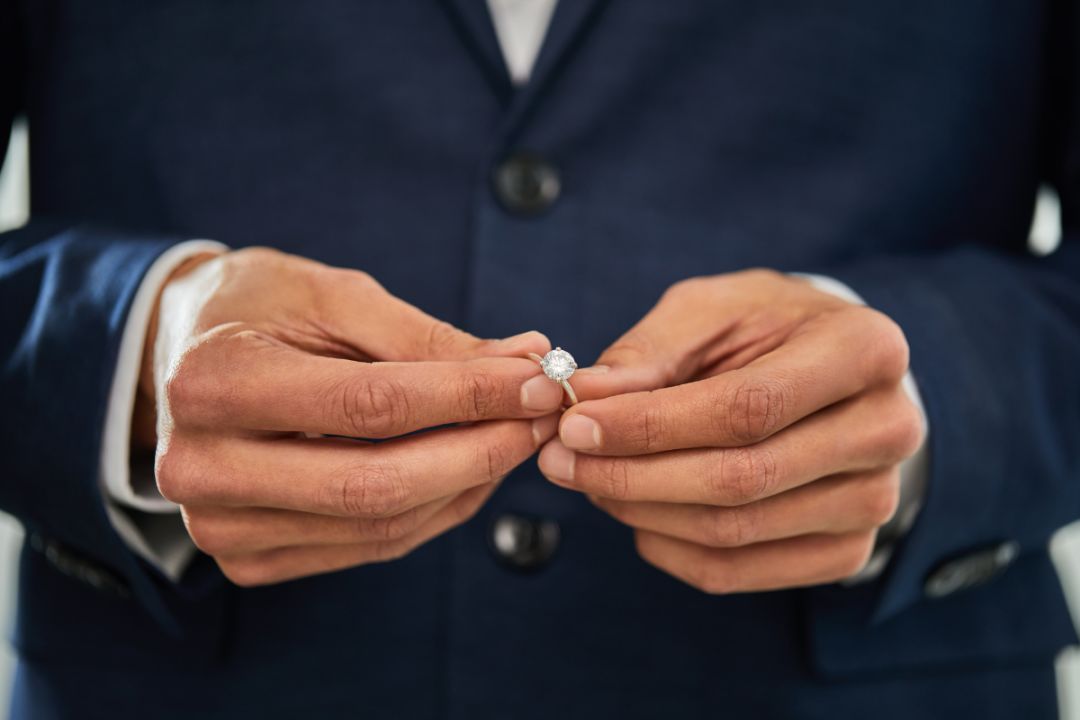
If you’re in the market for an engagement ring, it’s easy to get overwhelmed by the surplus of options. Whether you’re shopping for yourself or your soon-to-be-spouse, it’s important to start your engagement ring search with a clear strategy to avoid becoming overwhelmed.
Not only will this help you narrow down your options, but it might even make the buying experience more fun! Not sure where to start? No worries! This guide will break down the top five tips to help you find the perfect engagement ring.
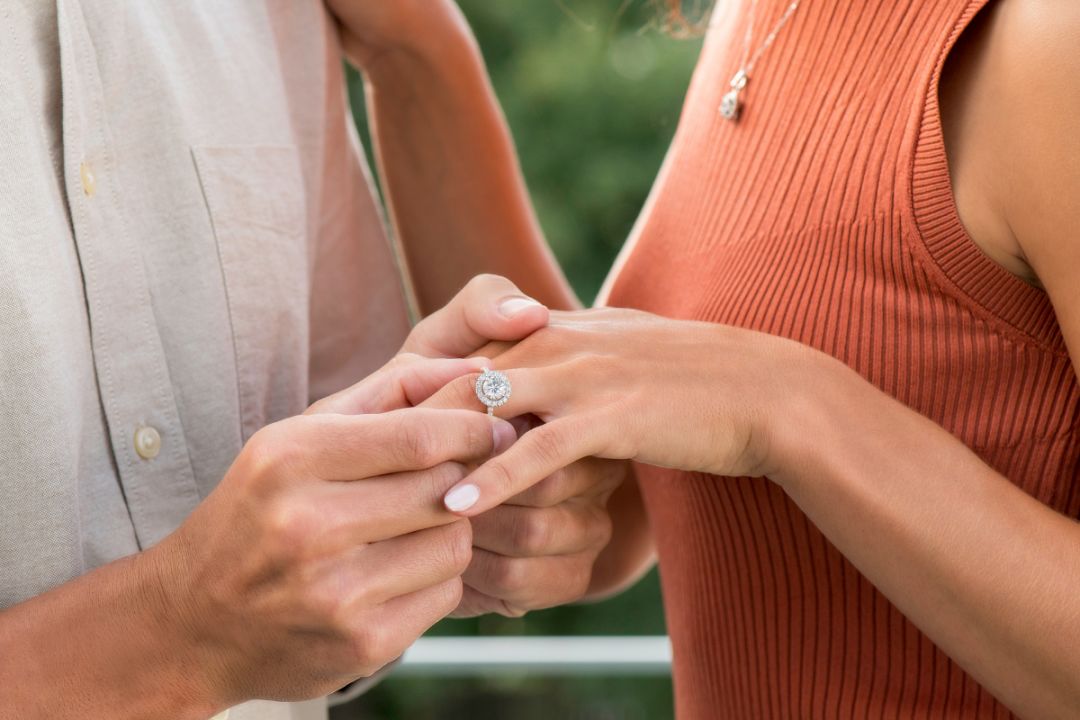
Figure Out Ring Size
While rings can be resized, it can be a costly and time-consuming process. Not to mention, most people prefer to announce their engagements with ring photos on social media. In that case, a ring that doesn’t fit may be a huge deal to your partner.
That’s why it’s so important to get the right ring size the first time around. If you are buying an engagement ring with your partner, getting the right size can be as simple as taking a trip down to your local jeweler and getting a professional measurement taken.
However, if you are buying a ring for your partner as a surprise, you’ll have to determine their ring size using stealthier methods. One of the most common tricks is to just measure their ring finger with a string and use an online ring size chart to get the right size.
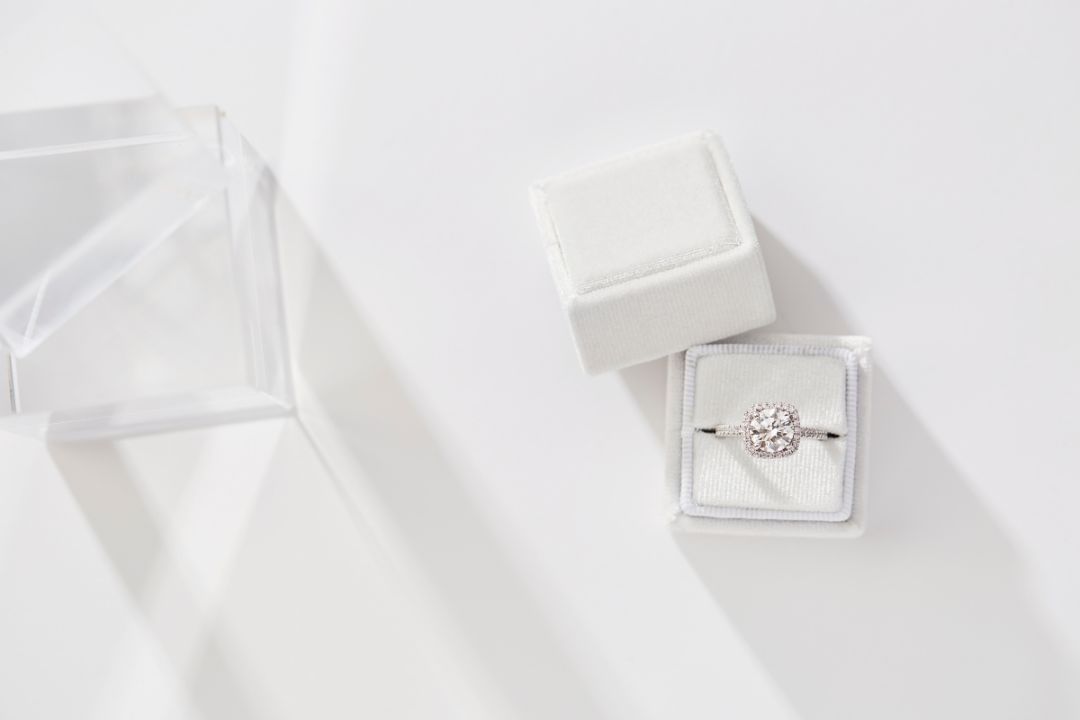
Choose Your Stone Carefully
When it comes to an engagement ring, your stone can make or break the look. That’s why it’s crucial to pay attention to a stone’s 4 Cs grade.
The 4 Cs stand for cut, clarity, color, and carat as measured by The Gemological Institute of America (GIA). Each diamond is graded according to:
- Cut: Diamonds are cut to control the way they interact with light, including brightness, scintillation, and fire. The cut grade will also account for the diamond’s design and overall quality.
- Color: A diamond’s color grade is based on the lack of color within the diamond, ranging from D-to-Z. A colorless diamond will receive a D grade, whereas a diamond that is completely colored will receive the Z grade. Fancy-colored diamonds lie outside of this range.
- Clarity: Diamond clarity grades the appearance of a diamond, depending on the visibility of internal inclusions or external blemishes under 10x magnification. Diamonds with no visible blemishes or inclusions are considered flawless.
- Carat: Diamonds are weighed in carats, with one carat totaling 200 milligrams.
Alongside the 4Cs, your diamond’s shape will serve as a defining feature of your ring. A diamond’s shape refers to its silhouette or outline. A round brilliant diamond will boast a circular shape, whereas a heart-shaped diamond will be heart shaped. The combination of diamond shape and the 4Cs will impact every facet of your diamond’s appearance and quality.
For example, rectangular shaped emerald-cut engagement rings typically feature diamonds with a step cut design, high clarity ratings, high color grades, and can make smaller carat diamonds look larger.
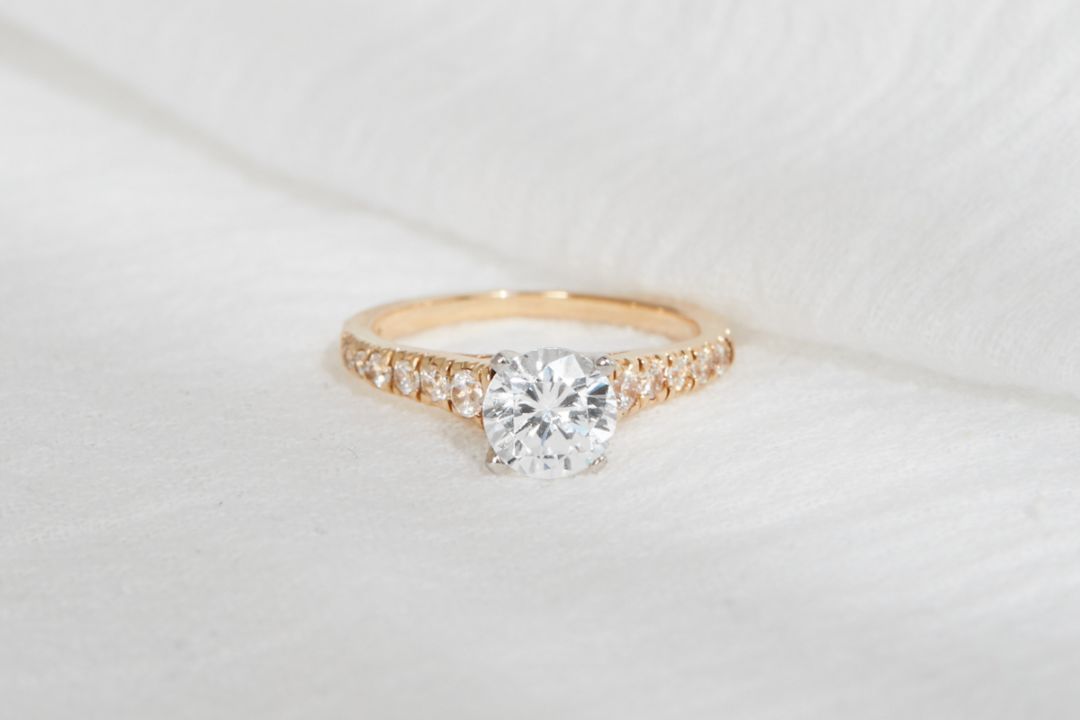
Don’t Forget About the Wedding Band
Engagement rings are traditionally worn with a wedding ring or band, so it’s important to make sure your wedding ring and engagement ring complement each other. This is easily achieved by matching metals, stone colors, or simply designing a complementary look yourself.
However, if you want your wedding and engagement rings to match, choose an engagement and wedding ring set. These bridal sets are designed to fit together perfectly, with some even boasting interlocking designs that are sure to stun and delight.
Know Your Metals
When it comes to choosing an engagement ring, the ring’s metal will contribute an accentuating color, durability, and may even add style through decorative elements, such as milgrain. Generally, you can choose between white, rose, or yellow gold, platinum, tungsten, and more. You might also consider recycled metal as an eco-friendly alternative to traditional metals.
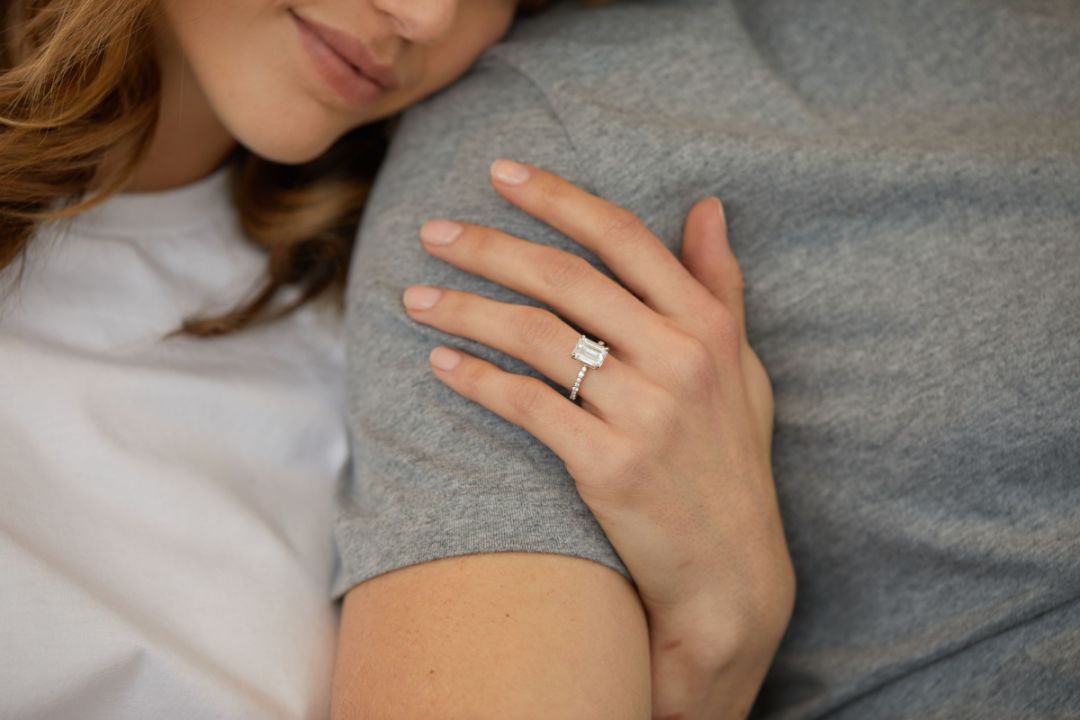
Research Different Shapes
An engagement ring’s center stone is the star of the show, so it’s important to consider its shape carefully. Each shape comes with its own advantages and drawbacks, so it’s essential to research prior to making a final decision.
Generally, elongated shapes such as emerald, pear, or oval-shaped diamonds can slim the finger when set vertically. Diamond shapes with sharp points, such as Marquis-cut diamonds, must be set properly or they may chip over time. Round shapes generally require larger diamonds, as much of the diamond’s volume is located in its pavilion, rather than its table or crown.
Understanding the influence of a diamond’s shape can help you make a final decision between an eye-catching pear-shaped engagement ring or a stunning round-brilliant engagement ring. Or any other stone shape for that matter.
Conclusion
When shopping for an engagement ring, keep in mind that the ring is the first step toward matrimonial bliss. Engagement rings symbolize the love and commitment you have for your partner, so it’s safe to say they’re worth the time and effort it takes to find one that’s a perfect match. Good luck!
